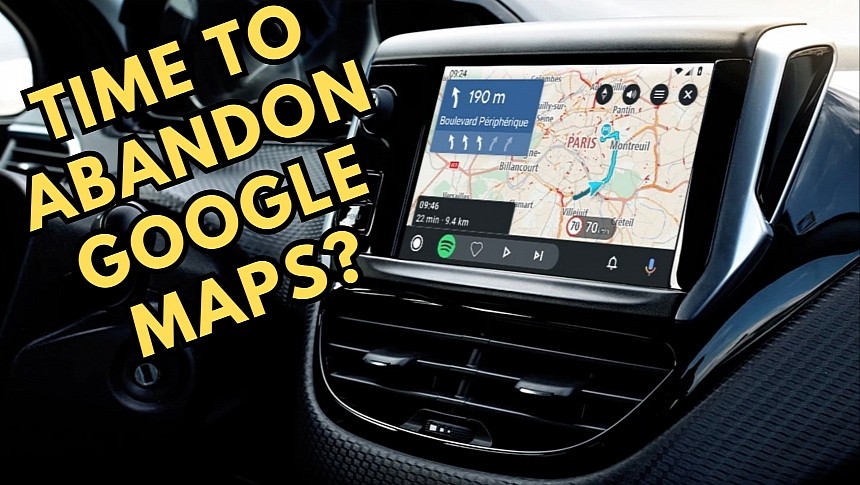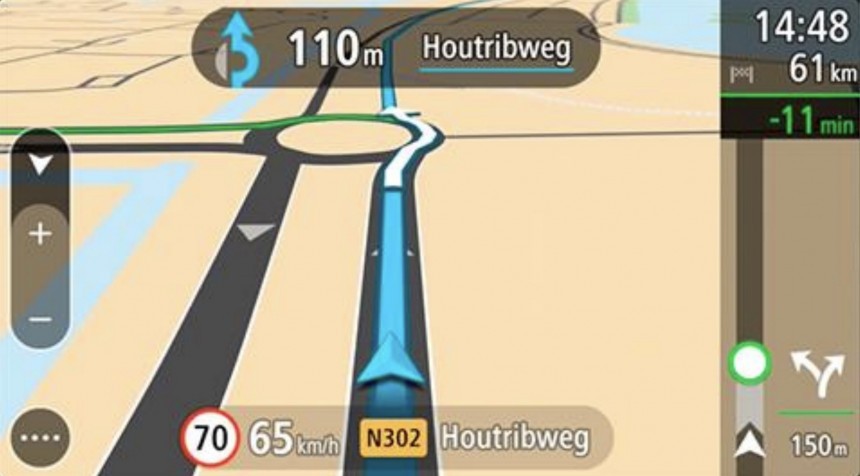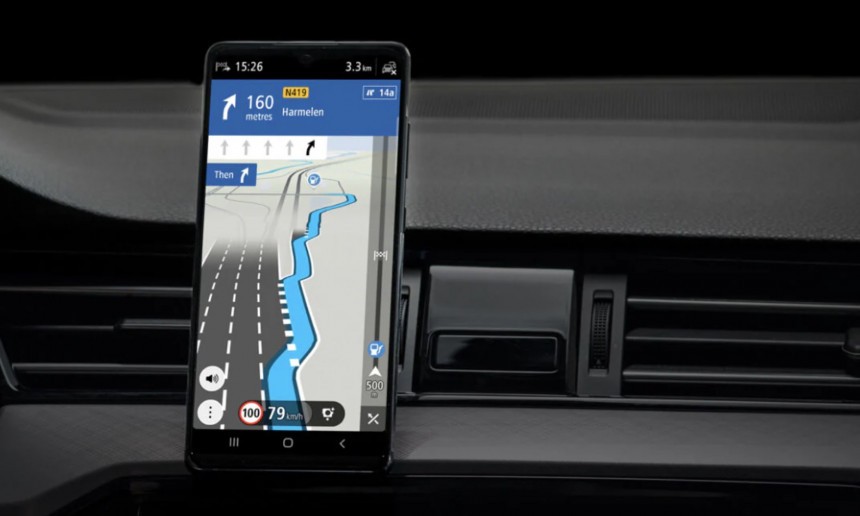Google Maps and Waze are already the navigation champions for turn-by-turn guidance, and both provide users with faster routes to the destination.
Not long ago, Google also received an option to prefer fuel-efficient routes over the fastest, offering a more environmentally friendly alternative when not in a rush to arrive at an address. However, most users stick with the fastest route option for obvious reasons.
Waze also excels because it mixes its routing engine with the built-in traffic reporting system. Waze uses reports submitted by users to determine areas potentially slowing you down, such as accidents, traffic jams, and broken traffic lights. It mixes these reports with historical traffic patterns and real-time information to find a faster route.
I recently tried TomTom GO Navigation specifically to see how the application finds and offers faster routes compared to Google Maps and Waze. The Google-owned apps rarely look for faster routes when navigation is also enabled – I discovered that manually searching for alternative routes in Waze helps find a quicker way to reach the destination, as the application doesn't conduct the search as often as I'd want. In some cases, Waze does not recommend an alternative route because it does not offer a significant gain over the current one.
TomTom relies on TomTom Services to monitor traffic conditions and, based on them, to provide routes to the defined destination. TomTom Services include a critical component called TomTom Traffic that collects traffic data from various sources, including users' devices, to determine real-time conditions.
The first thing I noticed when using TomTom GO Navigation is that the application recommends faster routes more often than Google Maps and Waze. It happens mostly when driving during rush hour, so traffic conditions are highly dynamic, with roads getting full of cars in a matter of minutes. TomTom GO Navigation recommended two faster routes during a 40-minute drive from the office, whereas Google Maps and Waze typically stick with the route recommended when I started driving.
TomTom also packs multiple ways to offer faster routes. First, it comes with an option to never bother you again and automatically take the faster route when the application finds it. The settings menu includes a section called "Route Planning," so if you enable the "Always take the fastest route," your navigation app automatically switches to the fastest route when it finds an alternative to the current suggestion.
Like Google Maps, it can also recommend a faster route and let you select it with a tap on the screen while driving (if the automatic option is disabled). A single tap is enough to activate the fastest route, and you should notice the directions changing on the screen.
However, you can also ignore the prompts (which is recommended, considering you're not supposed to interact with your mobile drive while driving) and simply follow the fastest route. TomTom GO Navigation uses blue to mark the current route on the map, but when a faster route is found, the application uses green to indicate its directions. As a result, you can follow the green route, and TomTom GO Navigation automatically re-routes, updating navigation with the new instructions.
The other thing I liked is that TomTom uses a route bar (which has several other purposes, including displaying important events on the road, such as accidents and traffic jams along the route) to provide more information on the fastest route. You can see critical details like how much time you save (in my case, one of the fastest routes found by TomTom GO Navigation was 8 minutes faster than the original suggestion, and this is living proof that traffic at rush hours is extremely dynamic), so the route bar helped me see the gain with just a quick peek at the screen. Additionally, the route bar displays the distance remaining to the destination for the new fastest route (keep in mind that the fastest route isn't also the shortest, so you could drive a few extra miles but arrive faster at the destination because of the better traffic conditions) and the ETA.
Of course, if you don't want to use the faster route and stick with the existing suggestion, you can deny the recommendation with a tap on the screen or simply follow the current route by going in the direction of the blue arrow you see on the screen. However, if you previously enabled the "Always take the fastest route" option in TomTom GO Navigation, the application automatically switches to the new suggested route, so disable this option if you don't want to be re-routed occasionally.
The only drawback with TomTom GO Navigation is that the application is not freeware. If you don't want to pay for a subscription, you can use the company's freeware alternative, AmiGO, or stick with Google Maps or Waze. TomTom AmiGO provides a decent navigation feature package, but after a quick test, it's very clear this freeware alternative can't be considered an alternative to Google Maps.
Waze also excels because it mixes its routing engine with the built-in traffic reporting system. Waze uses reports submitted by users to determine areas potentially slowing you down, such as accidents, traffic jams, and broken traffic lights. It mixes these reports with historical traffic patterns and real-time information to find a faster route.
I recently tried TomTom GO Navigation specifically to see how the application finds and offers faster routes compared to Google Maps and Waze. The Google-owned apps rarely look for faster routes when navigation is also enabled – I discovered that manually searching for alternative routes in Waze helps find a quicker way to reach the destination, as the application doesn't conduct the search as often as I'd want. In some cases, Waze does not recommend an alternative route because it does not offer a significant gain over the current one.
TomTom relies on TomTom Services to monitor traffic conditions and, based on them, to provide routes to the defined destination. TomTom Services include a critical component called TomTom Traffic that collects traffic data from various sources, including users' devices, to determine real-time conditions.
TomTom also packs multiple ways to offer faster routes. First, it comes with an option to never bother you again and automatically take the faster route when the application finds it. The settings menu includes a section called "Route Planning," so if you enable the "Always take the fastest route," your navigation app automatically switches to the fastest route when it finds an alternative to the current suggestion.
Like Google Maps, it can also recommend a faster route and let you select it with a tap on the screen while driving (if the automatic option is disabled). A single tap is enough to activate the fastest route, and you should notice the directions changing on the screen.
However, you can also ignore the prompts (which is recommended, considering you're not supposed to interact with your mobile drive while driving) and simply follow the fastest route. TomTom GO Navigation uses blue to mark the current route on the map, but when a faster route is found, the application uses green to indicate its directions. As a result, you can follow the green route, and TomTom GO Navigation automatically re-routes, updating navigation with the new instructions.
Of course, if you don't want to use the faster route and stick with the existing suggestion, you can deny the recommendation with a tap on the screen or simply follow the current route by going in the direction of the blue arrow you see on the screen. However, if you previously enabled the "Always take the fastest route" option in TomTom GO Navigation, the application automatically switches to the new suggested route, so disable this option if you don't want to be re-routed occasionally.
The only drawback with TomTom GO Navigation is that the application is not freeware. If you don't want to pay for a subscription, you can use the company's freeware alternative, AmiGO, or stick with Google Maps or Waze. TomTom AmiGO provides a decent navigation feature package, but after a quick test, it's very clear this freeware alternative can't be considered an alternative to Google Maps.




















